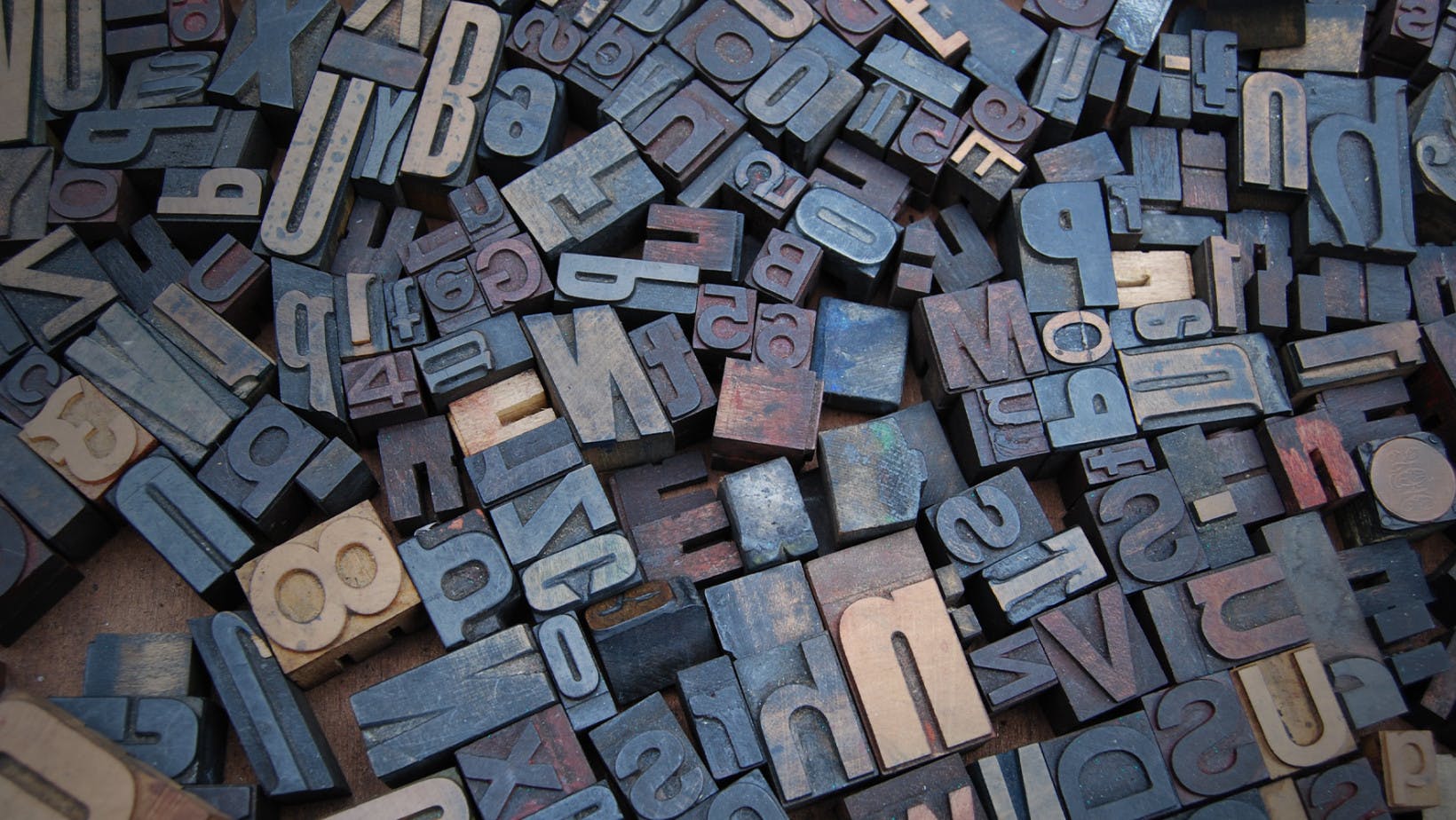
Statistics
What Do Subsets Mean in Statistics?
This article explains what subsets are in statistics and why they are important. You’ll learn about different types of subsets with formulas and examples for each.
Sarah Thomas
Subject Matter Expert

Statistics
07.06.2022 • 10 min read
Subject Matter Expert
Learn what a set notation is and why it is important. Create a set notation with the right structure and get reading and writing practice.
In This Article
In 1873, a German mathematician named Georg Cantor discovered that some sets of infinite numbers are larger than others. Amazing, right? Let’s learn the notation that helped Cantor compare the different sizes of infinity!
Set notation refers to the system of symbols used to describe sets.
In math, computer science, and statistics, sets are collections of mathematical objects. These objects—or elements—can be letters, numbers, shapes, symbols, or any other mathematical object. Set theory is the study of sets!
Set notation plays an important role in set theory because it provides a shorthand for describing the characteristics of sets and the relationship between sets.
If you don’t understand set notation, you will have difficulty reading and interpreting many computational problems.
Here are some examples of courses where you may need to use set notation:
Algebra
Calculus
Probability and statistics
Computer Science
Causal inference
Data science
Logic
In the table below, each symbol describes a particular set.
| SYMBOL | MEANING | EXPLANATION | EXAMPLE |
| A, B, C… | Names of sets | Capital letters are typically used to name and differentiate sets. | Set A, Set B, Set C, etc. |
| { } | Set | Curly brackets define a set. Anything within the curly brackets is an element of the set. Within the curly brackets, we separate elements with commas. | Suppose you want to define Set A as a set containing even numbers between 1 and 10. You can write: A = {2, 4, 6, 8, 10} |
| ∈ | is an element of | The symbol ∈ indicates that a mathematical object is an element of a particular set. | If 2 is an element of Set A, you can write: 2 ∈ {2, 4, 6, 8, 10} or 2 ∈ A. |
| ∉ | is not an element of | The symbol ∉ indicates that a mathematical object is NOT an element of a particular set. | 1 ∉ {2, 4, 6, 8, 10} or 1 ∉ A |
| Ø | Empty set | The empty set is a set with no elements. The symbol Ø indicates the empty set. You might also see curly brackets with nothing in between them to show an empty set. | Ø = { } |
| U | Universal set | A universal set is a set containing all relevant objects for a particular problem. | If you are dealing with just two sets A ={2, 4, 6, 8, 10} and B = {1, 3, 5, 7, 9}, then U = {1, 2, 3, 4, 5, 6, 7, 8, 9, 10} |
| | | | Cardinality of a set | The cardinality of a set is the number of elements in the set. | If A = {2, 4, 6, 8, 10}, then the cardinality of A is 5 since there are five elements in the set. |A| = 5. |
In the table below, each symbol describes the relationship between sets. We also refer to these symbols as set operations.
| SYMBOL | MEANING | EXPLANATION | EXAMPLE |
| ∪ | Union | The union of two sets, A and B, is the set of distinct elements that are in Set A, Set B, or both A and B. The symbol ∪ is used to represent a union of sets. | If A = {a, b, c, d} and B = {1, a, 2, b}, AUB = {1, 2, a, b, c, d} |
| ⋂ | Intersection | The intersection of sets, A and B, is the set of elements in BOTH Set A and Set B. The symbol ⋂ represents the intersection of sets. | If A = {a, b, c, d} and B = {1, a, 2, b}, A⋂B = {a, b} |
| ⊆ | Subset | A set, B, is a subset of another set, A, if all elements in B are also in A. We also consider a set to be a subset of itself. | Suppose Set A = {2, 4, 6, 8, 10} and Set B = { 2, 8}, since B is a subset of A, you can write: B ⊆ A. A is also a subset of itself, so you could write: A ⊆ A. |
| ⊂ | Proper subset | A proper subset is any subset of a set except the set itself. The symbol ⊂ indicates that one set is a proper subset of another. | Suppose Set A = {2, 4, 6, 8, 10} and Set B = {2, 4, 10}, since B is a proper subset of A, you can write: B ⊂ A. |
| ⊈ | Not a subset | The symbol ⊄ indicates that a set is NOT a subset of another set. | Suppose Set A = {2, 4, 6, 8, 10} and Set C = { 1, 2, 3, 4, 5}. Since C is not a subset of A, you can write: C ⊄ A. |
| ⊇ | Superset | If Set B is a subset of Set A, we call Set A a superset of Set B. The symbol ⊇ indicates that one set is a superset of another. | Suppose Set A = {2, 4, 6, 8, 10} and Set B = { 2, 8}. Since A is a superset of B, you can write: A ⊇ B. |
| ⊃ | Proper superset | A proper superset is any superset other than the set itself. The symbol ⊃ indicates that one set is a proper superset of another. | Suppose Set A = {2, 4, 6, 8, 10} and Set B = {2} since A is a proper superset of B, you can write: A ⊃ B. |
| ⊉ | Not a superset | The symbol ⊅ indicates that a set is not a superset of another. | Suppose Set A = {2, 4, 6, 8, 10} and Set B = {1, 2, 3, 4, 5} since A is not superset of B, you can write: A ⊅ B. |
| P( ) | Power set | A power set is a set containing all subsets of a set. The notation P( ) is used to denote a power set. | If Set A = {1, 2, 3}, the power set of A is a set containing all subsets of A. Therefore, P(A) = {Ø, {1}, {2}, {3}, {1, 2}, {1, 3}, {2, 3}, {1, 2, 3}} |
| = | Equality | Equality means that two sets have the exact same elements. For two sets to be equal, every element in one must also be an element in the other. In other words, the two sets must be subsets of each other. | If Set A = {a, b, c} and Set B = {a, b, c}, you can write: A = B |
| - | Difference | The difference of two sets is the set of all elements in the first, but not in the second. | If Set A = {2, 4, 6, 8, 10} and Set B = { 2, 4}, then A - B = {6, 8, 10} |
or A' | Complement | The complement of a set is a set containing all elements that are not in the original set. The notation or A’ is used to symbolize the complement of Set A. | If Set A is a set of all even numbers within a universal set of integers, then the complement of Set A would be a set of all odd numbers. Therefore, = {all odd numbers} |
| x | Cartesian product | The Cartesian product of two sets is the set of all ordered pairs, where a is in A and b is in B. | If A = {1, 2} and B = {a, b}, we can write the Cartesian product as A x B = {(1, a), (1, b), (2, a), (2, b)} |
In the previous section, you saw how to use set notation to list out all the elements in a set. As an alternative, you can use set-builder notation to describe the elements of a set. This comes in handy when you want to describe a set with many elements or when you want to describe a more complex relationship between sets.
Here is a quick example. Say you want to define a set that contains any number that is greater than 20, but less than 100. To describe this set, you could write:
The vertical bar | is shorthand for the phrase “such that.” In this example, the notation is defining a set of numbers, , such that is greater than 20 and less than 100. The table below shows other symbols used to describe sets.
| SYMBOL | MEANING | EXPLANATION | EXAMPLE |
| ∀ | For all... | We use the symbol ∀ as shorthand for the phrase “for all...” | To identify all 𝑥’s that are an element of Set B, you could write: ∀𝑥 ∈ B |
| | or : | Such that | We use the symbols | or : as shorthand for the phrase “such that…” | To define the Cartesian product of Set A and B, you could write: A x B = {(a,b) | a ∈ A and b ∈ B} |
| ∃ | There exists | The symbol ∃ is shorthand for the phrase “there exists...” | To say that a set A contains natural numbers that are greater than 5, you could write: A = { ℕ | n > 5 } |
| ∄ | There does not exist | The symbol ∄ is shorthand for the phrase “there does not exist...” | Suppose A U B is an empty set. If this is the case, there can be no Set C with elements in both A and B. You can write this as A U B = Ø, then ∄ C that has ∈ A and ∈ B |
| ∴ | Therefore | We use the symbol ∴ as shorthand for the term “therefore..” | If Set A is equal to Set B, then Set B must be equal to Set A. You can write this as A = B ∴ B = A |
| ℤ | Integers | We often use the symbol ℤ to indicate the set of all integers. Integers are numbers that can be expressed without using fractions. | To indicate that -3 is an element of the set ℤ, you could write -3 ∈ ℤ |
| ℕ | Natural numbers | We use the symbol ℕ to indicate the set of natural numbers. Natural numbers are positive integers (sometimes inclusive of 0). | To indicate that Set A is a proper subset of ℕ, you could write: A ⊂ ℕ |
| ℝ | Real numbers | The symbol ℝ represents the set of real numbers. A real number is any number that is not imaginary. It can be an integer or a decimal, and it can be positive or negative. | If Set A is a set of all real numbers, you can write: A = { ℝ } |
| ℚ | Rational numbers | The symbol ℚ represents the set of all rational numbers. A rational number is a number that can be expressed as an integer divided by another integer. | Since 2.5 or 5/2 is a rational number, it is an element of the set of rational numbers. 2.5 ∈ ℚ. |
| 𝕀 | Imaginary numbers | The symbol 𝕀 represents the set of all imaginary numbers. An imaginary number is a number that can be expressed as the square root of a negative number. | Since 2 is not an imaginary number, you could write 2 ∉ 𝕀 |
| ℂ | Complex numbers | The symbol ℂ represents the set of all complex numbers. A complex number is a number formed by combining a real number with an imaginary number. | To communicate that imaginary numbers are a subset of complex numbers, you could write: 𝕀 ⊂ ℂ |
See if you can interpret the following set notation. Check your interpretation with the written explanations below.
We listed the examples in order of difficulty, starting with the easiest.
A = {a, b, c, d, e}
3 ∉ B
|C| = 4
A U B = {1, 3, 5}
C ⊂ D
D ⊇ C
Challenge problem: A = {𝑥 | 5 ≤ 𝑥 ≤ 10, 𝑥 ∈ ℕ }
A is a set containing elements a, b, c, d, e.
3 is not an element of Set B
Set C has four elements OR Set C has a cardinality of four
The union of Set A and Set B is a set containing elements 1, 3, 5
C is a proper subset of Set D
D is a superset of C
Challenge problem: A is a set containing natural numbers greater than or equal to five and less than or equal to 10.
See if you can write the following phrases using set notation. Check your results with the solutions below. We listed the examples in order of difficulty, starting with the easiest.
A is a set representing the results of a single coin flip
B is a set of vowels
The cardinality of set B is 5
The complement of Set A is a set containing elements 1, 2, 3
The set of integers is a proper superset of the set of natural numbers
The intersection of A and B is a set containing the elements a, b, c
Challenge problem: A is a set containing integers greater than or equal to -7 and less than -1.
A = {heads, tails} or A = {H, T}
B = {a, e, i, o, u}
|B| = 5
= {1, 2, 3} or A’ = {1, 2, 3}
ℤ ⊃ ℕ
A ⋂ B = {a, b, c}
A = {𝑥 | -7 ≤ 𝑥 ﹤ -1, 𝑥 ∈ ℤ }
Set notation is a system of symbols that describe and compare collections of mathematical objects known as sets. Master set notation, and you’ll be a better mathematician, data scientist, and social scientist!
Outlier (from the co-founder of MasterClass) has brought together some of the world's best instructors, game designers, and filmmakers to create the future of online college.
Check out these related courses:

Statistics
This article explains what subsets are in statistics and why they are important. You’ll learn about different types of subsets with formulas and examples for each.
Subject Matter Expert

Statistics
Here is an overview of set operations, what they are, properties, examples, and exercises.
Subject Matter Expert

Calculus
Knowing how to find definite integrals is an essential skill in calculus. In this article, we’ll learn the definition of definite integrals, how to evaluate definite integrals, and practice with some examples.
Subject Matter Expert